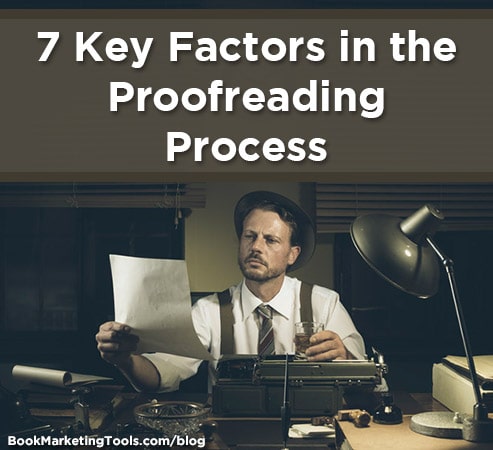When the last word was written and the last period was in place, I hope you took some time to just relax and savor the moment. Whether this was your first or 15th book, you need to relish the accomplishment. But now, the tedious part begins, and it’s all on you. You, and only you, are now tasked with the process of proofreading that amazing piece before you. While tedious, it is still a really important part of the publishing process. Here are some tips to keep you on the right track and perhaps make the task less painful.
Accept that you may proofread more than once
It is a good thing to proofread for just one thing at a time. You may catch spelling errors while you are proofing for punctuation, and you will want to correct them when you find them, but focus on one thing at a time – sentence structure, agreement, verb tense errors in one reading; punctuation and other mechanics in another; spelling, vocabulary and consistency in yet another. Decide what you will look for in advance of each reading.
Have a plan and a calendar
Determine the order in which you are going to look for each set of things, and set up a calendar for competing each of those readings. I like a physical calendar in front of me at all times, but that is a personal preference. When you are self-publishing and do not have an editor or publisher on your back, it is easy to procrastinate. Just remember – the more rapidly you get this finished, the sooner you can really focus on that sequel.
You cannot do an entire proofing for any set in a single day or sitting. There is a pretty high burnout rate when proofreading. So, as you set that calendar, divide your chapters up into chunks and set aside a few hours each day.
Attention to detail please
It’s so easy to get caught up in the story and to begin to savor what a great job you did with that character development and that surprise or humor you were able to craft so well. If you find yourself succumbing to this, just stop. Go back and start reading again, taking each sentence out of its context and addressing it individually.
Read out loud
You don’t have to use your normal voice until you become hoarse. You can tone it down. The idea behind this is to get two senses involved in your proofreading – your eyes and your ears. Errors in sentence structure, agreement, tense, and dangling modifiers are so much easier to detect when you do this. If something doesn’t “sound” right to you, it probably isn’t right. Take a second look, figure out the problem, and fix it.
Use the tools that technology has given you
There are some great tools out there for proofreading, and you may want to use some of them before you do your own physical proofreading (no, you cannot just rely on the tools.)
Here are some options:
- Grammarly. This tool will usually locate grammar errors and make suggestions for improvement. Be aware, however, that it is academically-oriented. For example, it will point out the use of passive voice as a problem. Passive voice may be perfect for what you have written in a given passage, so you will have to pick and choose which corrections you really want to make.
- PerfectIt: This tool will pick up such things as inconsistencies in spelling. It’s a good one to use initially before your own proofreading begins.
- Hemingway: Particularly if you have written a non-fiction work, this may be a great tool to eliminate all of those superfluous words and phrases that may “muddy up the waters.” If you need to be clear and concise, this is the tool for you.
- Free Plagiarism Checkers: None of us means to plagiarize. However, in the course of research for books and the amount of reading that we as authors do, it is easy to remember a line, phrase, or sentence and think of it as our own. Don’t take the chance. Plagiarism scan are easy.
This is just a short list. You will find many more proofreading tools with a simple Google search. Just be certain to read through the descriptions before you fork out any money to use them.
Go slowly
Yes, you want to get this over with – everyone gets that. But you need to read at a steady but slower pace than another reader may read your work. If you have some difficulty with this, then use a text-to-speech tool that will let you set a pace at which the text is read aloud.
Take Breaks
Uggh. Proofreading is not fun. And it really requires focus. If you have set a reasonable calendar, and let’s say you are going to proofread three chapters today, then take a break after each chapter and do something totally mindless. Watch TV, take a walk, clean a cupboard, or go outside and pull weeds. Whatever you do, do not read while you are taking breaks.
Proofreading is certainly the least favorite part of getting a book ready for publication. It takes time, focus, and just plain drudgery at times. If you divide up the task, use some good tools, and let yourself walk away when necessary, however, you can get through this with a minimal amount of dread.
Rick Riddle is a content manager and an up-and-coming blogger whose articles aim to help people with digital marketing, entrepreneurship, career, and self-development. Feel free to follow Rick on Twitter and LinkedIn.

